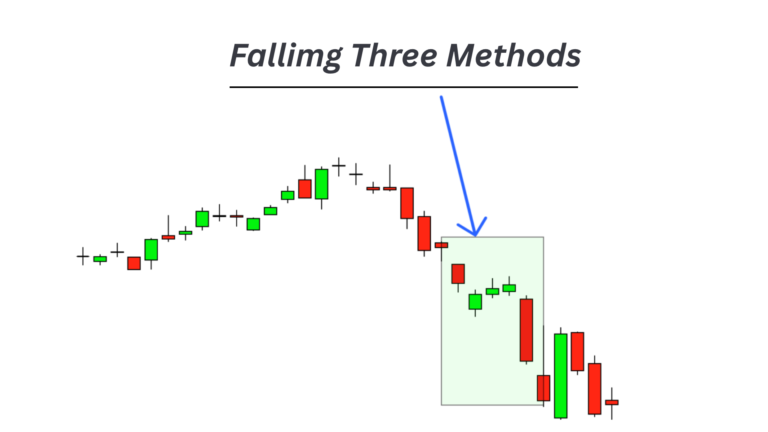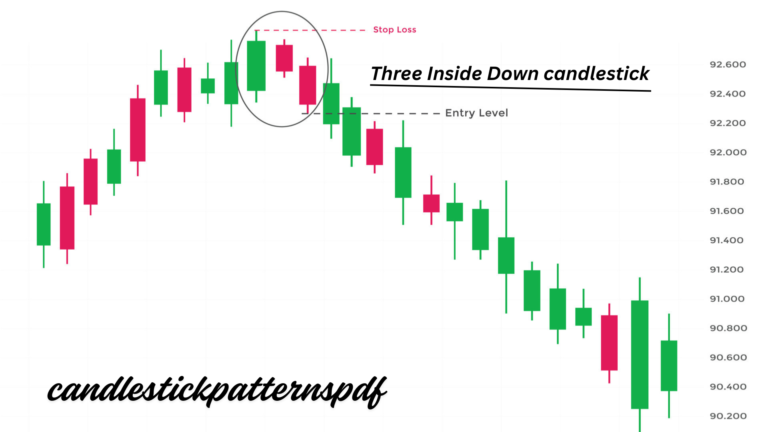What Is an Evening Star Pattern? Complete Guide to Recognizing and Trading This Bearish Reversal Signal
The evening star pattern is one of the most reliable and visually distinctive bearish reversal patterns in candlestick charting. For traders and investors who rely on technical analysis, recognizing this three-candle formation can provide valuable signals about potential market turning points.

In this comprehensive guide, we’ll explore what the evening star pattern is, how to identify it, and strategies for trading it effectively.
What Is the Evening Star Pattern?
The evening star is a three-candle bearish reversal pattern that appears at the end of an uptrend. It signals that bullish momentum is weakening and a potential downtrend may be imminent. This pattern is considered highly reliable when confirmed with additional technical indicators and is respected by traders worldwide.
The evening star consists of:
- A large bullish (green/white) candle showing strong upward momentum
- A small-bodied middle candle (either bullish or bearish) showing indecision
- A large bearish (red/black) candle showing that sellers have taken control
Why Is It Called an Evening Star?
The pattern gets its name from astronomy. Just as the evening star appears in the sky as daylight fades, signaling the coming of darkness, the evening star pattern appears at market tops, signaling a potential reversal from bullish to bearish conditions. The middle candle of the pattern represents a moment of equilibrium—like a star hanging in the twilight sky—before the market direction changes decisively.
How to Identify the Evening Star Pattern
To accurately identify an evening star pattern, look for these five key elements:
1. Strong Uptrend
The evening star must form at the end of a clear uptrend. This establishes the context of the reversal. Without a preceding uptrend, the pattern loses its significance.
2. First Candle
The first candle should be a large bullish candle with a substantial body, representing strong buying pressure. This candle continues the existing uptrend and shows that bulls are still in control.
3. Second Candle
The second candle is crucial—it represents market indecision and the first sign of weakening bullish momentum. This candle has these characteristics:
- Significantly smaller body than the first candle
- Can be either bullish or bearish
- Often forms a gap up from the first candle (though not required)
- May take the form of a doji, spinning top, or other small-bodied candle
4. Third Candle
The third candle confirms the reversal. It should be a strong bearish candle that:
- Has a large body showing significant selling pressure
- Penetrates deeply into the body of the first candle (ideally closing below the midpoint)
- Confirms that sellers have overwhelmed buyers
5. Gap Between Candles (Optional)
While not strictly necessary, gaps between the candles can strengthen the pattern:
- A gap up between the first and second candles shows continued bullish momentum
- A gap down between the second and third candles reinforces the bearish reversal signal
What Does the Evening Star Pattern Tell Traders?
The evening star pattern tells a clear market story:

- Bulls are initially in control, pushing prices higher (first candle)
- Indecision enters the market as buyers and sellers reach equilibrium (second candle)
- Bears take control and push prices lower, overwhelming buying pressure (third candle)
This sequence represents a classic market psychology shift from optimism to uncertainty to pessimism. When the pattern completes, it suggests that a new downtrend may be beginning.
Example of an Evening Star Pattern
Imagine a stock has been in an uptrend for several weeks. On Monday, it closes with a large bullish candle, gaining 2.5%. On Tuesday, it opens slightly higher but trades in a narrow range, forming a small doji candle. On Wednesday, it gaps down at the open and closes with a large bearish candle that retraces most of Monday’s gains.
This three-day formation constitutes a classic evening star pattern and suggests that the prior uptrend may be reversing. Traders observing this might consider reducing long positions or initiating short positions, depending on their strategy and risk tolerance.
How Traders Use the Evening Star Pattern
Successful traders typically use the evening star pattern in conjunction with other technical analysis tools. Here are common strategies:
- Confirmation: Wait for additional confirmation before acting on the pattern, such as:
- Increased trading volume on the third (bearish) candle
- Bearish divergence on momentum indicators like RSI or MACD
- Support level breakdowns
- Trendline breaks
- Entry Points: Enter short positions after the completion of the third candle, often on the next day’s open or after a small bounce.
- Stop Losses: Place stop losses above the high of the pattern (typically above the second candle’s high).
- Profit Targets: Set profit targets based on:
- Previous support levels
- Fibonacci retracement levels
- Risk-reward ratios (often 1:2 or 1:3)
- Chart patterns or trend analysis
- Risk Management: Size positions according to the distance between entry and stop loss to maintain consistent risk across trades.
How Reliable Is the Evening Star Pattern?
While the evening star is considered one of the more reliable candlestick patterns, its accuracy varies based on market conditions, timeframes, and asset classes. Studies suggest success rates between 60-75% when properly identified and confirmed.
Factors affecting reliability include:
- Market Context: The pattern works best in established trends rather than choppy markets
- Timeframe: Generally more reliable on daily charts than very short-term charts
- Volume: Higher volume during the pattern formation increases reliability
- Candle Proportions: The more the third candle penetrates the first candle, the stronger the signal
- Additional Confirmation: Success rates improve significantly when combined with other technical signals
Important Tips for Using the Evening Star Pattern
- Wait for Completion: Never act on a partial pattern—wait for all three candles to complete.
- Consider Multiple Timeframes: Check if the pattern aligns with trends on both higher and lower timeframes.
- Market Environment: The pattern tends to be more reliable in trending markets than in ranging markets.
- Sector Analysis: Check if the broader sector or market is showing similar reversal signals.
- Fundamental Backdrop: Be aware of any fundamental catalysts that might support or contradict the technical signal.
- Patience: Don’t force trades—wait for clear, well-formed patterns rather than ambiguous formations.
Common Mistakes When Trading the Evening Star Pattern
- Ignoring Context: Trading the pattern without considering the broader trend context.
- Premature Entry: Entering trades before the third candle completes.
- No Confirmation: Failing to seek additional confirmation from other indicators.
- Poor Stop Placement: Placing stops too tight or too loose relative to the pattern’s structure.
- Overtrading: Taking every pattern without filtering for quality setups.
- Size Mismanagement: Risking too much on a single pattern trade.
Variations of the Evening Star Pattern
Evening Doji Star
The most powerful variation features a doji (open and close at virtually the same level) as the middle candle. This represents perfect equilibrium between buyers and sellers and often signals a stronger reversal potential. The evening doji star is considered a more reliable signal than the standard evening star.

Smaller or Bigger Candles
While the classical pattern has specific proportions, variations with differently sized candles still maintain the pattern’s essence:
- Larger third candles relative to the first candle suggest stronger bearish momentum
- Extremely small middle candles often indicate stronger indecision
- First candles with long upper wicks may indicate diminishing bullish strength even before the pattern forms
Difference Between Morning Star and Evening Star
The morning star pattern is essentially the inverse of the evening star:
- Morning Star: A bullish reversal pattern appearing at the end of downtrends
- Evening Star: A bearish reversal pattern appearing at the end of uptrends
Their structures mirror each other:
- Morning star: Large bearish candle → small indecision candle → large bullish candle
- Evening star: Large bullish candle → small indecision candle → large bearish candle
Both patterns follow the same psychological principle: a transition from one-sided market control to indecision to control by the opposing force.
Final Thoughts
The evening star pattern represents one of technical analysis’s most visually distinctive and analytically sound bearish reversal signals. When properly identified and confirmed, it can provide traders with valuable insights into potential market turning points.
However, like all technical patterns, it should never be used in isolation. The most successful traders incorporate these signals into a comprehensive trading strategy that includes multiple forms of analysis, strict risk management, and disciplined execution.
By understanding both the mechanics and the market psychology behind the evening star pattern, traders can add a powerful tool to their technical analysis toolkit—one that may help them identify crucial market turning points before they become obvious to the broader market.






